Animal Classification Worksheets for 8-Year-Olds
5 filtered results
-
From - To
Discover the engaging world of animal classification with our specially designed worksheets for 8-year-olds! Perfect for enhancing young learners' understanding of the animal kingdom, these worksheets introduce key concepts of categorizing animals into their respective groups. Kids will explore various categories, such as mammals, reptiles, birds, and more, while developing critical thinking skills. Our fun activities promote hands-on learning, allowing children to sort, identify, and quiz their knowledge in a playful manner. Encourage your child's curiosity and comprehension of biodiversity with our comprehensive, easy-to-follow worksheets that make learning about animals an exciting adventure! Ideal for classrooms and at-home learning.
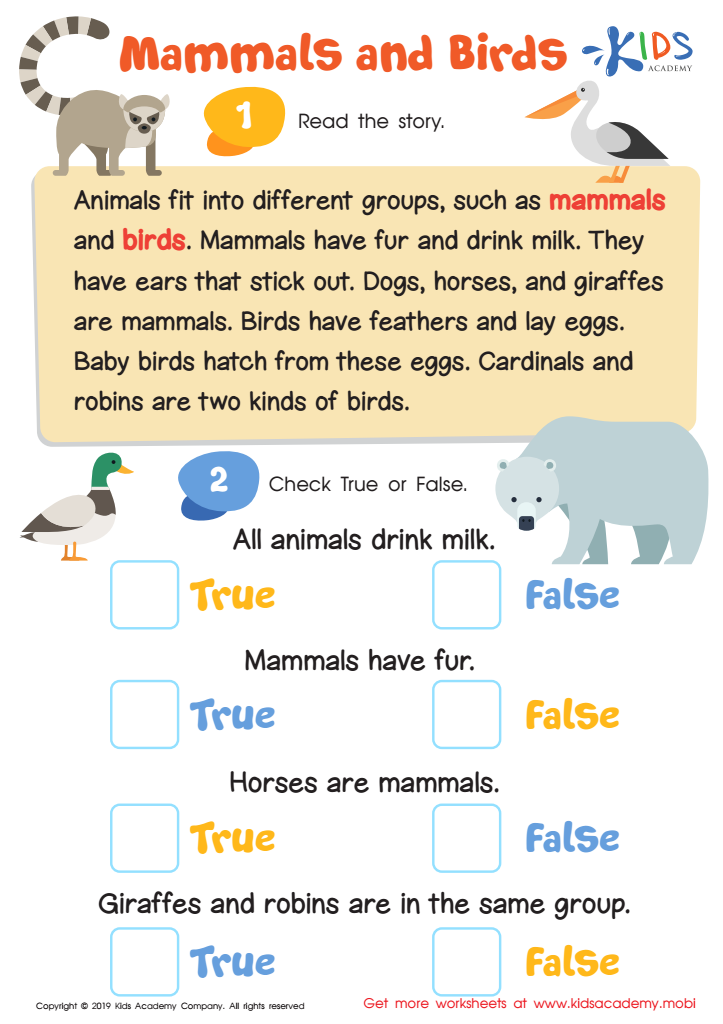

Mammals and Birds Worksheet
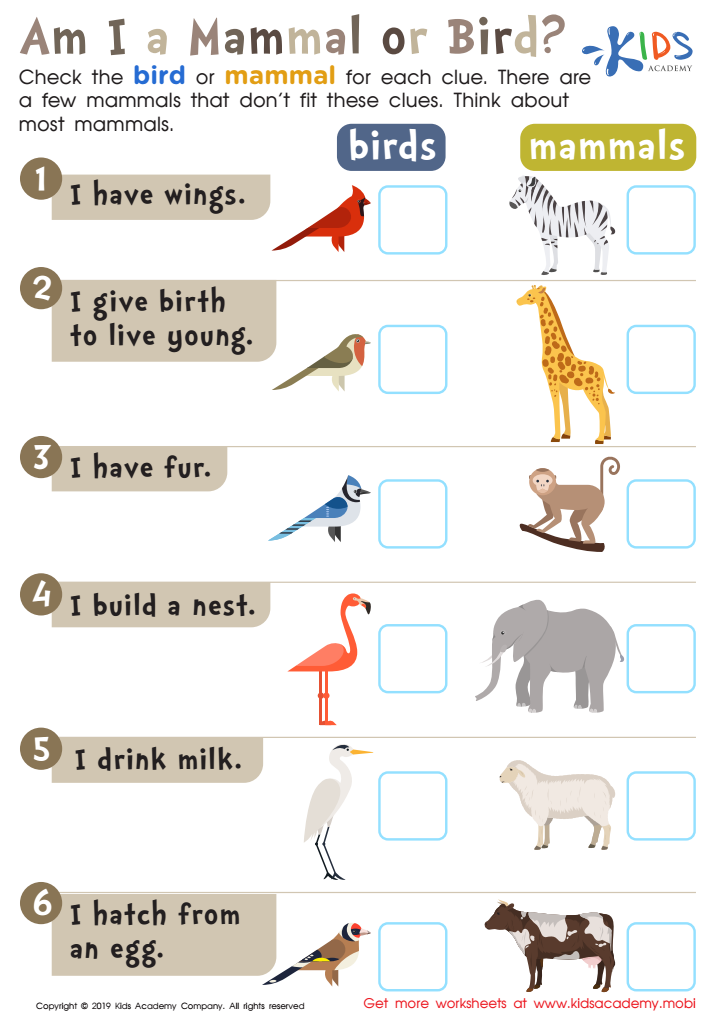

Am I a Mammal or Bird? Worksheet
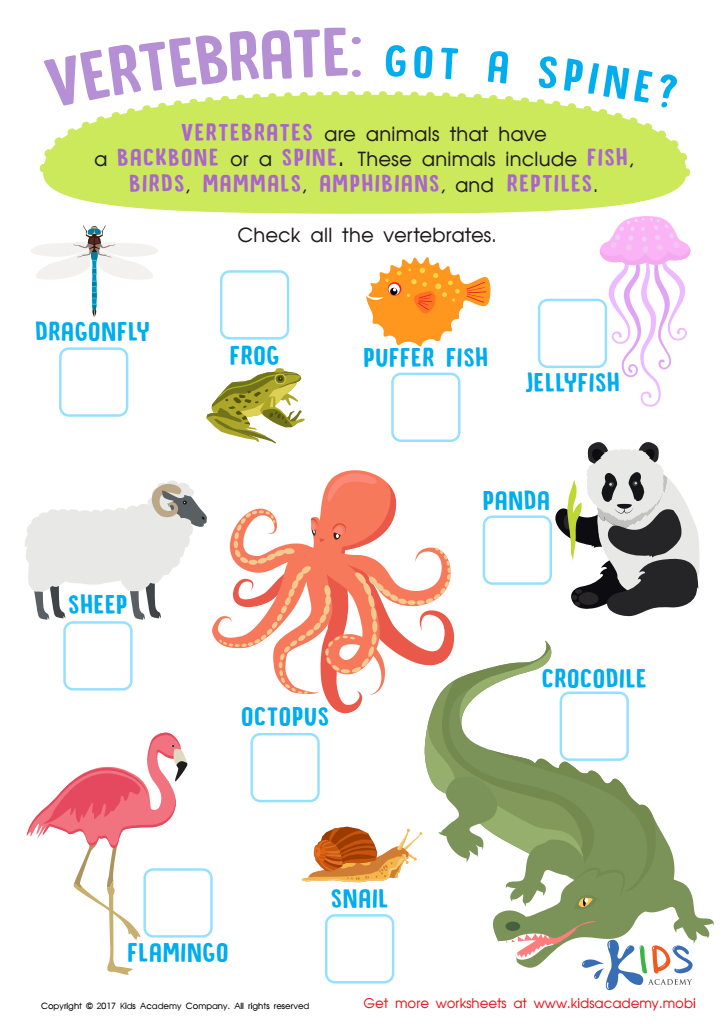

Vertebrates Animals Worksheet for 3rd Grade
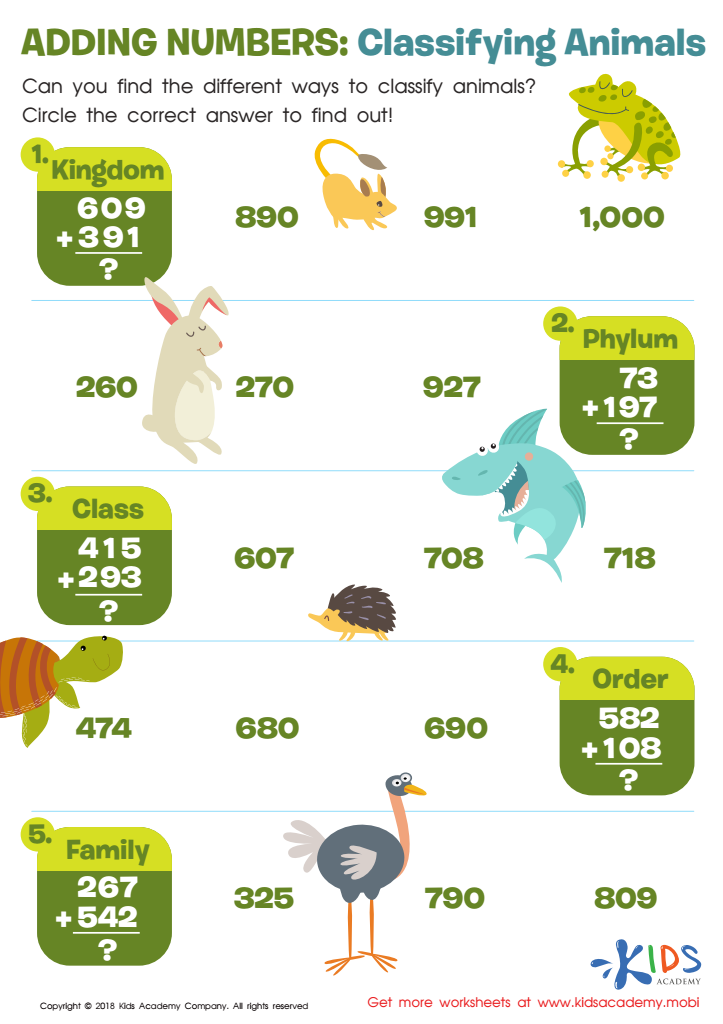

Adding Numbers: Classifying Animals Worksheet
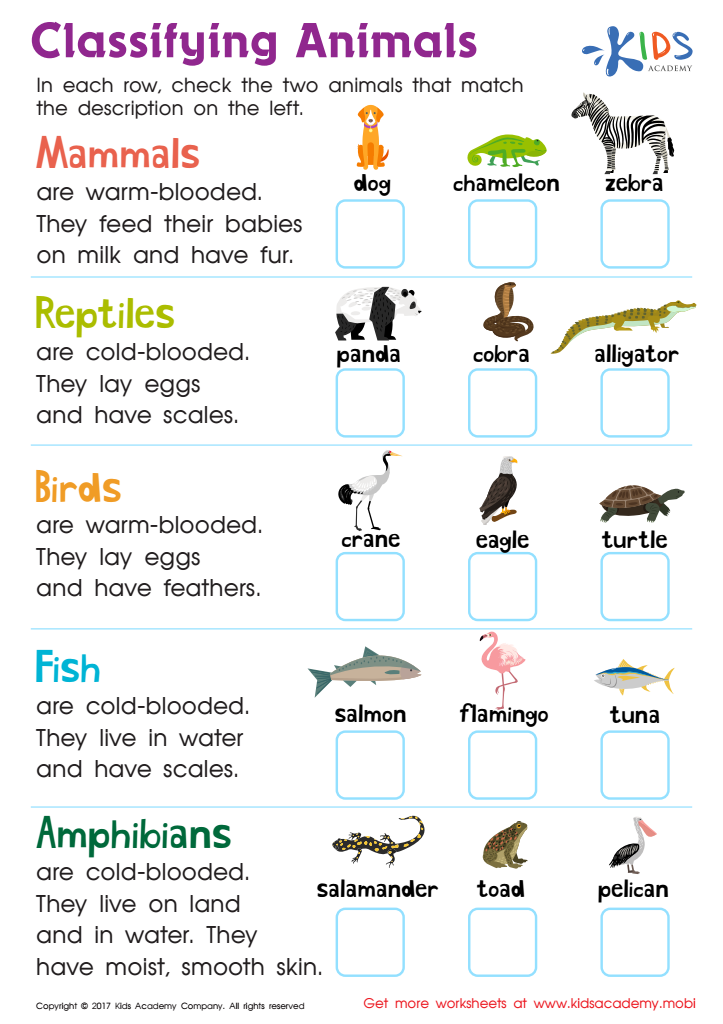

Classifying Animals Worksheet
Animal classification is fundamental to a child's understanding of biology and the natural world. By teaching 8-year-olds about how animals are grouped, parents and teachers help them develop critical thinking skills. Classifying animals—whether by mammals, reptiles, birds, amphibians, or fish—encourages students to observe and compare characteristics, fostering a sense of curiosity.
Understanding animal classification can also enhance a child's appreciation for biodiversity. As they learn about different species, children gain insight into the ecosystems we all share and the importance of wildlife conservation. This knowledge can inspire empathy and responsibility towards animals and their habitats.
Furthermore, animal classification aligns with key educational standards, making it an engaging learning component in subjects like science and environmental studies. It sparks discussions in storytelling and art projects, integrating various learning styles.
Finally, discussing animal classification can create valuable bonding moments between parents, teachers, and children. Using real-life examples, such as visits to zoos or nature reserves, deepens their connection to the material. By grasping the basics of animal classification, children cultivate a foundation for lifelong learning about the world around them. In essence, it equips them with knowledge, compassion, and an understanding of their role in nature.

 Assign to My Students
Assign to My Students






















